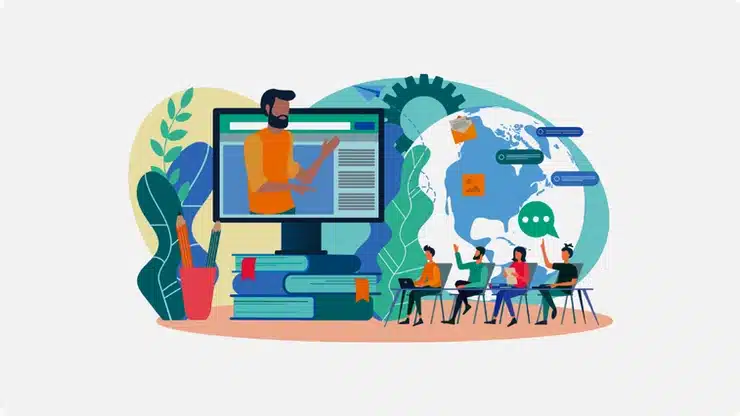The Covid-19 epidemic has demonstrated a clever alternative to traditional teaching methods: online instruction was offered as the greatest alternative to classroom instruction. Even after the epidemic, a number of nations are prepared to adopt hybrid learning formats (online and classroom instruction) in conjunction with their educational departments. That’s a great concept, but the teachers will need to improve their skills in order to teach effectively online. Learn some online teaching techniques and put them into practice in your next session.
Include games that are interactive.
The fundamental distinction between online and offline education is the degree to which students participate. There are a few pupils that do not participate in class. This is unquestionably an issue with online education.
It is your job as a teacher to engage all of your pupils and keep them actively engaged. Use YouTube as a resource and incorporate activities in which all pupils may participate. You can use a simple question-and-answer game to reinforce the topic given in class. It might be as simple as having a regular chat with kids before or after class. Maintain a 5- to 10-minute free window and ensure that all kids are responding and communicating with you (the instructor) and their classmates during that period.
Inquire and provide feedback.
Another great way to make an online lesson more engaging is to use this technique. It is not necessary for a teacher to communicate with pupils before or after the class. Ask questions throughout the presentation, just like you would in a classroom. Encourage pupils to ask questions by interrupting your class.
Provide comments to students based on interactivity, involvement, and overall performance. It will also motivate kids to ask more questions in class. You may send an audio message to each student individually in addition to providing comments during class.
Inquire about a solution.
Create a complicated scenario when giving a subject and have the students come up with a solution. It will also make the classroom more engaging. They will also be capable of critical thinking.
By forming small groups, a teacher can allow pupils to engage dialogues with their peers. On a group call, the students will debate the issue for a few minutes and propose a solution to the problem.
Use a variety of resources
You will be able to find photos and videos that are relevant to any subject or topic you are teaching. All of these should be included in your lesson plan. Bookish courses or lectures will tire your pupils if you’re teaching online. So, using these materials, keep things basic yet lively.
Because of these materials, students will be more engaged in the course and your lecture. When creating a lesson plan or preparing a presentation, you must conduct extensive research in order to properly utilize available materials.
Design infographics
If you can’t find what you’re looking for on the internet, create your own. It doesn’t matter if it’s infographics or a PowerPoint presentation; your effort, no matter how unprofessional, will pique students’ attention. Share the file with all of the attendees just before the class begins so that they may all see it.
Familiarize yourself with the tools.
Explore all there is to offer, whether it’s video calling apps, course creation tools, a virtual whiteboard, or anything else. Teachers mostly utilize the common characteristics of these programs, which include a variety of functions. As a result, many things stay undiscovered and unutilized.
But the truth is that these underutilized features may make your lessons more engaging. These may also help with physical labor. So learn more about the tools you’re utilizing by watching YouTube videos. Remember that technology is an integral component of online teaching and learning, therefore appropriate application of these tools and technologies is vital.
Simple Laboratory Activities
Because you don’t have access to proper lab equipment at home, you can do some easy tasks. Inform the pupils ahead of time about the DIY activities so that they may participate. For these exercises, use readily available instruments and surprise the kids with the experiment’s outcomes.
Stay Alert And Responsive
Teachers may find it challenging to pay attention to all of the students in an online class, but they must manage. In an online class, a teacher must guarantee that no student feels left out. As a result, react to all of them.
A class can have different types of learners – be extra-careful for them and repeat the lesson if necessary. Along with checking the homework and assignments on time, it is essential for a teacher to manage the class. Make sure all the students have their video output on during the online class and monitor them while teaching.
To conclude, there are a few basic differences between online and offline classes. So, clear the lesson objectives at the beginning and speak with guardians when needed. All these will potentially level up your online teaching and the lesson taught will be a successful one.







